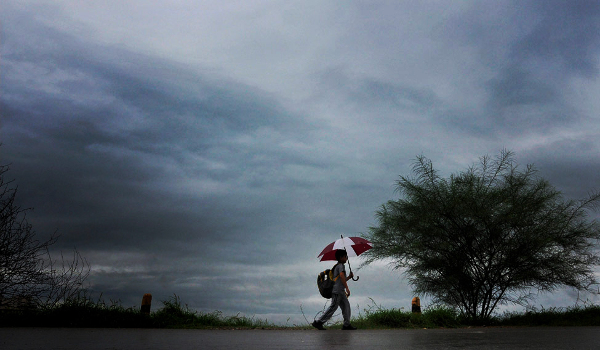A four day International Workshop on Prediction skill of extreme Precipitation events and tropical cyclones: Present status and future Prospect (IP4) & Annual Climate Change Workshop began here today with the Union Secretary for Earth Sciences, Dr. M. Rajeevan, announcing various new initiatives of the Ministry for improving weather and climate forecasts and services in the country.
“With better modelling, observations and data assimilation, we have improved weather forecasting services in the recent years. We have invested a lot in numerical weather prediction under Monsoon Mission which has resulted in a reliable dynamical modelling framework for predicting monsoon on different scales,” said Dr. Rajeevan while talking about improving prediction of extreme weather events and tropical cyclones.
“Our ensemble Global forecast system (GFS) developed for providing short to medium range weather prediction at a very high resolution of 12 km is the best in the world. This 12 km GFS system enables the country to make many new societal initiatives such as block-level agri forecast, extreme rainfall forecast, wind and energy forecast, fog prediction and forest fire forecast. Our extended range forecast system providing prediction of rainfall about 2-3 weeks in advance is finding many applications in various sectors. Our seasonal coupled forecast system with a high resolution of 32 km is also the best in the world in providing reliable monsoon forecast. Some issues are there which we are constantly trying to improve to make our forecasts better. We are working to improve the model enabling it to better capture Indian Ocean teleconnection that plays an important role, in addition to El Nino, in the Indian monsoon,” Dr. Rajeevan added.
“We have seen five cyclones this year and all were predicted well in advance, saving life and property. Such longer lead forecasts of cyclones with higher accuracy for cyclogenesis, intensity, track and landfall has been possible particularly with this 12 km GFS model,” said Dr. Rajeevan.
“We are soon going to publish a national climate change assessment report on the lines of IPCC report. But this report will be India specific in its approach and will provide climate change projections from the Indian Earth System Model (ESM),” said Dr. Rajeevan.
He also informed that weather and climate community in India is assimilating about 250 GB of ocean-land-atmosphere data by using state of the art data assimilation methods.
“To improve weather services further, we need to do more of vertical profiling of various meteorological parameters. For this, we are going to increase our radar observational network to have 50 radars in the next two years. More wind profilers and microwave radiometers will be added in the network. To further expand our observational network, we have acquired 100 acres of land in Bhopal to establish a state of the art Atmospheric Research Testbed (ART) laboratory in the central India. ART will help in improving physical parameterisation to enable the model to do better forecasting in the Indian context,” he added.
“Society needs information about extreme weather events at least 7 days in advance which we are yet to achieve. We are working to provide impact based forecast to society that will tell people about how it will impact their lives. To achieve this, we are going to use artificial intelligence and machine learning to help in improving our understanding of weather and climate phenomena and their forecasting. The Ministry is also working on augmenting the existing supercomputing facility to 100 petaflops (PF) in the next 2 years,” said Dr. Rajeevan while speaking on the occasion.
Prof. Kerry Emanuel from MIT, USA; Prof. Graeme Stephens from JPL, NASA, USA; Prof. Ravi S. Nanjundiah, Director, IITM, Pune, Dr. R. Krishan, Executive Director, Centre for Climate Change Research at IITM, Dr. P. Mukhopadhyay, Convener of the conference also called for more research, modelling, and observational efforts for improving prediction skill of extreme weather events and tropical cyclones.
The workshop is being organised by the Indian Institute of Tropical Meteorology, Pune under the aegis of the Ministry of Earth Sciences, Govt. of India.
Source: THBL
Image Courtesy: The Week
You may also like
-
New Heat-Based Approach To Cancer Treatment Can Reduce Chemotherapy Doses
-
Scientists Take A Major Step Towards Unification Of Classical & Quantum Gravity
-
India Graphene Engineering and Innovation Centre (IGEIC) Under the Vision of Viksit Bharat@2047 Launched
-
New High-Performance Gas Sensor can Monitor Low Level Nitrogen Oxides Pollution
-
Antidepressant Drug can be Repurposed for Treating Breast Cancer
